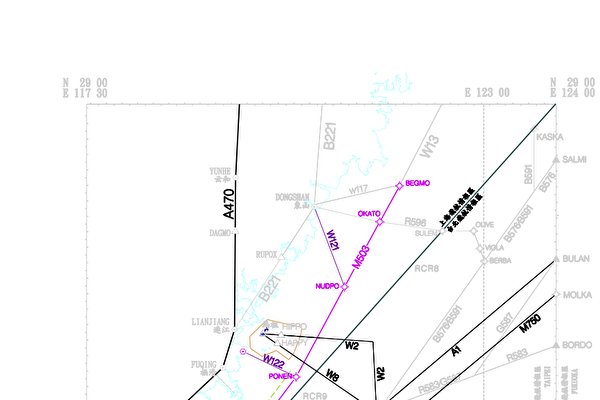The Civil Aviation Administration of the Ministry of Transportation of the Republic of China (Taiwan) reported that on April 18th, they received a notification from the Civil Aviation Department of the People’s Republic of China. The mainland claimed that routes W122 and W123 would be implemented for eastbound flights starting from midnight on the 19th. Due to the serious impact of this measure on the flight safety in Taiwan’s airspace, the Civil Aviation Administration expressed strong protest against the unilateral actions by the mainland without consultation.
The Ministry of Transportation’s Civil Aviation Administration in Taiwan stated today (April 19th) that China unilaterally announced on January 30th the cancellation of the north-south flight offset of route M503 and the subsequent use of routes W122 and W123 for west-east flights. This move violates the 2015 consensus between the two sides, significantly affecting the flight safety of routes to Taiwan’s Kinmen and Matsu islands, and greatly increasing the risk of regional flights. Therefore, the Civil Aviation Administration issued a press release on January 31st to explain the related issues.
The Civil Aviation Administration of Taiwan’s Ministry of Transportation indicated that they had formally protested to the Civil Aviation Department of the People’s Republic of China on February 1st and requested prompt communication and negotiation between the two sides regarding the use of route M503 and others. Unfortunately, since February 1st, the mainland has persisted in changing the flight offset measures for route M503 and has initiated daily flights on routes W122 and W123 from west to east starting on April 19th.
The Civil Aviation Administration of Taiwan pointed out that route W122 is closely adjacent to the southern boundary of Taiwan’s Matsu terminal airspace, about 2.8 nautical miles away, while route W123 is even closer to Taiwan’s Kinmen terminal airspace, with a separation of only 1.1 nautical miles. The small distance between the two airspaces poses certain risks. Further mutual use of these routes will increase the complexity of regional air operations and flight control tasks. In the event of adverse weather conditions or abnormal aircraft operations, the aviation safety risks will significantly increase.
The Civil Aviation Administration has instructed its air traffic control units to monitor the flight status of flights using routes M503, W122, and W123. If any aircraft approaches Taiwanese airspace, they must strongly request that the Chinese air traffic control units divert the aircraft or take other necessary measures to ensure the safety of civil aircraft operations in the Taipei Flight Information Region and the routes to Kinmen and Matsu.
The Civil Aviation Administration once again urged the mainland to communicate promptly with Taiwan in accordance with international norms regarding the use of the relevant routes and to establish operational coordination procedures between the two air traffic control units to ensure the safety of flight operations and the normal operation of air transport.
责任编辑 (Editor): 李天琦

